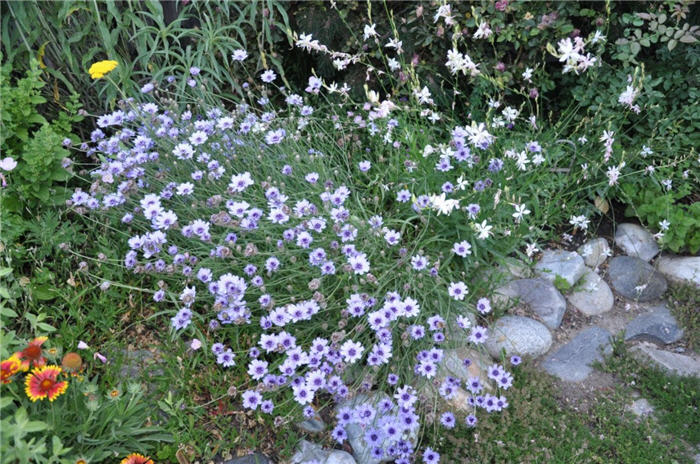| Botanical Name: Aster oblongifolius | |
| Common Name: Aromatic Aster |

-
Anatomy
-
Culture
-
Design
Plant Type
Perennial
Height Range
1-3'
Flower Color
Blue, Violet
Flower Season
Summer, Fall
Leaf Color
Green
Bark Color
n/a
Fruit Color
n/a
Fruit Season
n/a
Sun
Full, Half
Water
Low, Medium
Growth Rate
Moderate
Soil Type
Sandy, Clay, Loam, Rocky, Unparticular
Soil Condition
Average, Poor, Well-drained, Dry
Soil pH
Neutral
Adverse Factors
n/a
Design Styles
English Cottage, Meadow, Ranch, Woodland
Accenting Features
Showy Flowers
Seasonal Interest
Fall
Location Uses
Background, Entry, Perennial Border, Walls / Fences
Special Uses
Cut Flowers, Naturalizing, Small Spaces
Attracts Wildlife
Butterflies
Information by: Stephanie Duer
Photographer:
Photographer:
-
Description
-
Notes
Aromatic aster is a high plains native, that typically occurs on limestone glades, slopes, prairies and dry open ground. A bushy, stiff, compact, low-growing plant with hairy stems. Typically grows 1 to 2 feet tall, though infrequently to 3 tall, and about as wide. It has small, daisy-like flowers with violet blue rays and yellow center disks. Rigid, toothless, oblong, blue-green leaves are, as the common name suggests, fragrant when crushed. Good cut flower. Attractive to butterflies. Tolerates poorer and drier soils than other asters. There are named cultivars available, selected for color or habit.
Grow in average, medium to dry, well-drained soils in full sun to part shade. Pinching back stems in late spring will lower overall plant height, but will also delay bloom onset and increase branches, increasing the number of blooms. A light winter mulch will help protect crowns. Cut stems to the ground in early spring before new growth appears. Wet soils in winter can be fatal.